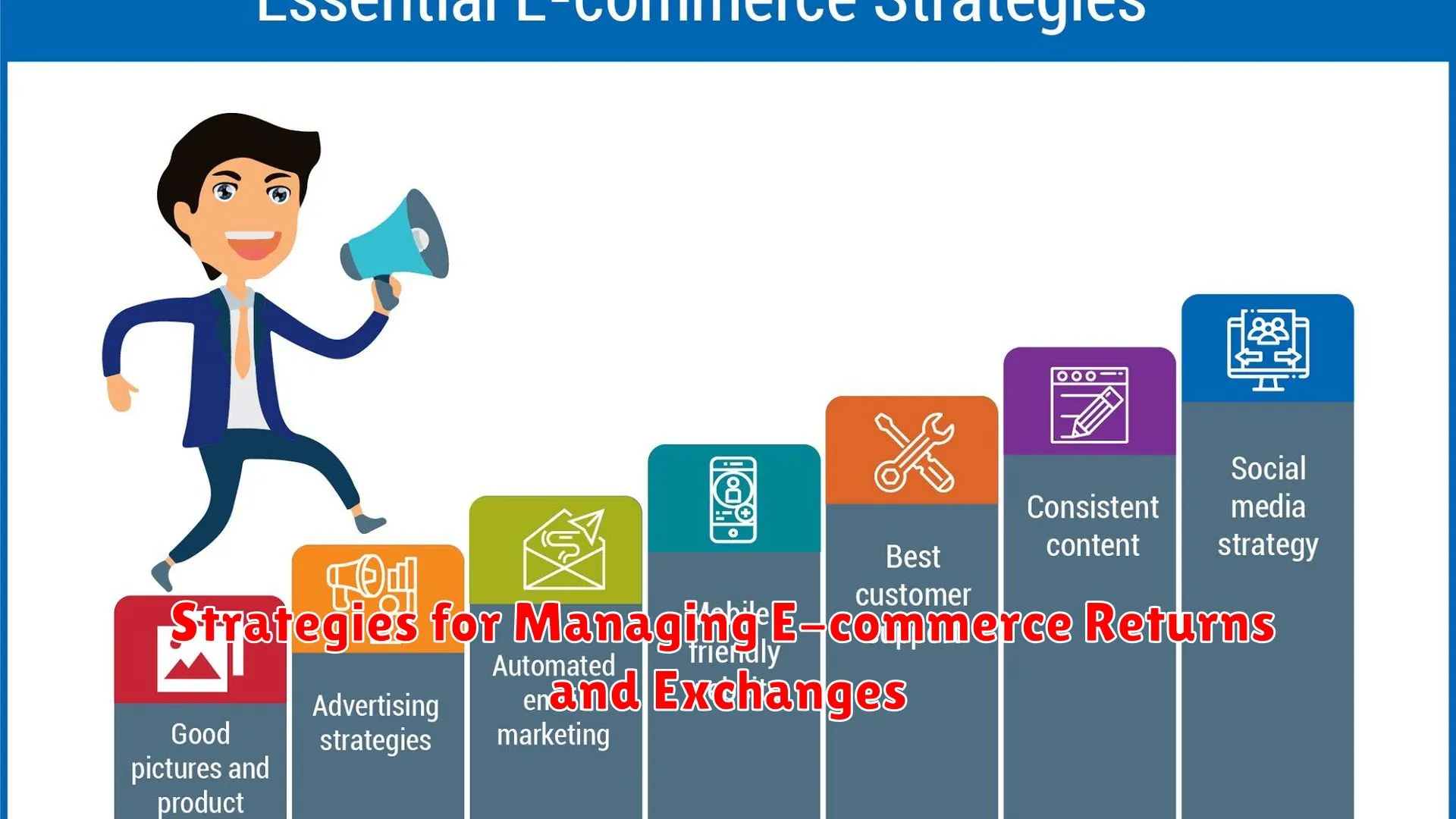Efficiently managing e-commerce returns and exchanges is crucial for customer satisfaction and business success. Explore effective strategies to streamline the process and improve the overall shopping experience for your customers.
The Importance of a Clear Returns Policy

In the realm of e-commerce, having a clear returns policy is essential for building trust with customers and ensuring a positive shopping experience. This policy outlines the process customers need to follow in case they are dissatisfied with their purchase or need to make a return or exchange.
A clear returns policy is crucial for managing customer expectations and reducing uncertainties. When customers know exactly what to expect regarding returns and exchanges, they feel more confident in making a purchase.
By clearly stating your returns policy on your e-commerce website, you are providing transparency and showing customers that you prioritize their satisfaction. This transparency can help in building customer loyalty and encouraging repeat business.
Furthermore, a well-defined returns policy can streamline the returns process for both customers and your business. It helps to avoid confusion, minimize disputes, and improve efficiency when handling returns and exchanges.
Overall, a clear returns policy is a fundamental component of effective e-commerce management. It not only instills trust and confidence in customers but also contributes to a smoother and more efficient operation of your online store.
Streamlining the Returns Process

Efficiently managing returns and exchanges is crucial for the success of an e-commerce business. Streamlining the returns process can help enhance customer satisfaction and minimize operational costs.
One strategy to streamline returns is to have a clear and user-friendly return policy. Ensure that the policy is prominently displayed on your website, outlining the steps customers need to take to return or exchange a product.
Implementing a centralized returns system can also simplify the process. By having a dedicated portal or customer service team to handle returns, you can provide consistent support and quick resolutions to customers.
Utilizing data analytics can further optimize the returns process. Analyzing return reasons and patterns can help identify product issues, improve inventory management, and reduce return rates in the long run.
Integrating automation tools such as return management software can help streamline the workflow. These tools can automate return authorization, shipping labels, and restocking processes, saving time and improving efficiency.
Reducing Return Rates through Quality Control

Quality control plays a crucial role in managing e-commerce returns and exchanges effectively. By implementing strict quality control measures, businesses can significantly reduce return rates and enhance customer satisfaction. Here are some strategies to achieve this:
1. Detailed Product Descriptions
Providing accurate and detailed product descriptions can help set clear expectations for customers. When customers receive exactly what they expect based on the description, the chances of returns due to misunderstandings or dissatisfaction are minimized.
2. Regular Quality Checks
Conducting regular quality checks on products before shipment can help identify and rectify any issues or defects. This proactive approach can help prevent faulty items from reaching customers, reducing the need for returns.
3. Secure Packaging
Ensuring secure and protective packaging for products can help minimize damage during transit. Proper packaging not only reduces return rates due to damaged goods but also enhances the overall customer experience.
4. Streamlined Return Processes
Having a streamlined and efficient return process in place can make it easier for customers to return products if necessary. Clear return policies, easy-to-follow instructions, and responsive customer support can help resolve issues swiftly, reducing return rates.
5. Feedback Analysis
Collecting and analyzing feedback from customers who have returned products can provide valuable insights for improving quality control processes. Understanding the reasons for returns can help identify patterns and areas for improvement.
By prioritizing quality control measures and implementing these strategies, e-commerce businesses can effectively reduce return rates, minimize operational costs, and build a reputation for reliability and customer satisfaction.
Handling Exchanges Efficiently

Efficiently managing exchanges is crucial for e-commerce businesses to maintain customer satisfaction and streamline operations. Here are some strategies to help you handle exchanges more effectively:
- Clear Exchange Policies: Clearly communicate your exchange policies on your website to set expectations for customers. Make sure the process for initiating an exchange is simple and easy to follow.
- Automated Exchange System: Implement an automated system that can streamline the exchange process. This can include automated email notifications, return labels, and tracking updates to keep both you and the customer informed.
- Quick Response Time: Respond to exchange requests promptly to show customers that their concerns are being taken seriously. A quick response can help build trust and loyalty with your customer base.
- Efficient Inventory Management: Maintain accurate inventory records to ensure you have the right products available for exchanges. This can help expedite the exchange process and minimize delays for customers.
- Training for Staff: Provide training for customer service staff on handling exchanges efficiently. This can include product knowledge, problem-solving skills, and effective communication techniques to resolve exchange issues promptly.
Leveraging Returns Data for Business Insights

When it comes to managing e-commerce returns and exchanges, leveraging returns data can provide invaluable insights for businesses. By effectively analyzing the data from returned items, companies can gain valuable information that can help improve various aspects of their operations.
1. Understanding Return Trends
By examining the reasons behind returns and tracking return trends, businesses can identify patterns and common issues. This information can help optimize product quality and minimize return rates by addressing recurring problems.
2. Enhancing Customer Experience
Insights from returns data can also be used to enhance the overall customer experience. Understanding why customers are returning items can enable businesses to make improvements in product descriptions, sizing guides, and photos, leading to fewer returns in the future.
3. Streamlining Inventory Management
Returned items can impact inventory management. By analyzing returns data, businesses can gain a better understanding of stock levels and trends, allowing them to adjust purchasing decisions and optimize stock levels for better inventory control.
4. Informing Marketing Strategies
Return data can also offer valuable insights for marketing strategies. By understanding which products are frequently returned, businesses can re-evaluate their marketing campaigns or target different customer segments to improve conversion rates and reduce return rates.
5. Driving Business Growth
Ultimately, leveraging returns data for business insights can drive business growth by enabling companies to make data-driven decisions that improve customer satisfaction, operational efficiency, and profitability.
Conclusion
In conclusion, implementing efficient return policies, clear communication, and streamlining the return process are vital strategies for successful management of e-commerce returns and exchanges.

